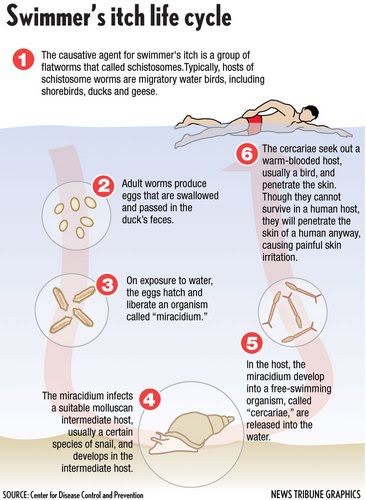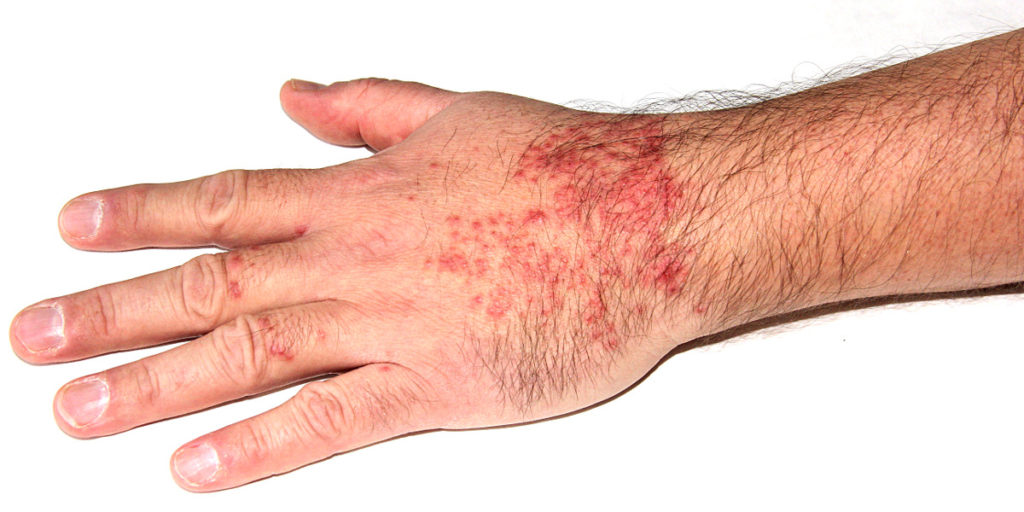

Open-water activities flourished and so did the parasites. The period from spring to the end of summer 2018 was unusually warm (6). In temperate climates, swimmer’s itch is a seasonal disease mainly diagnosed during summer months, when both the number of open-water activities and snail release of cercariae reach peak levels (5). If repeated exposures occur, the reaction is often more rapid and severe, indicating sensitization and allergic reactions (2–4). The disease is self-limiting within 1–3 weeks. The itch becomes more intense and the rash typically develops with papules and vesicles during hours or a few days after exposure.
#SWIMMERS ITCH CAUSE SKIN#
These non-human schistosomes are considered unable to complete their development in human hosts, where they become entrapped in the skin and die soon after penetration, inducing an intense inflammatory response (2).Ī few hours after exposure to water carrying infective cercariae, the affected person develops an itchy maculopapular rash, limited to areas immersed in water. The avian schistosomes most often responsible for the infection have a 2-host lifecycle: snails as intermediate hosts and birds as final hosts. It is caused by various species of skin-penetrating schistosome cercariae (1), which are larval flatworm parasites emerging from aquatic snails that occur worldwide, usually in freshwater. Swimmer’s itch, or cercarial dermatitis, is a waterborne non-communicable skin condition. In conclusion, a risk of swimmer’s itch in Denmark was confirmed.

This study explored the clinical picture of the disease, and demonstrated the occurrence of infected fresh water snail species in selected Danish water bodies. The unusually warm spring and summer of 2018 led to an increasing number of reports of the condition in Denmark and established a collaboration between the Department of Dermatology and the Faculty of Health and Medical Sciences, Department of Veterinary and Animal Sciences. Shedding of infective larvae from snails is temperature dependent, and high temperatures and sunshine increase the risk of encountering the parasite and becoming infected. The itchy maculopapular rash develops on exposed areas of the skin and typically resolves within 1–3 weeks. Cercarial dermatitis appears worldwide, but may be caused by different trematode species. Swimmer’s itch, or cercarial dermatitis, is a waterborne non-communicable skin condition caused by schistosome cercariae released by aquatic snails.


 0 kommentar(er)
0 kommentar(er)
